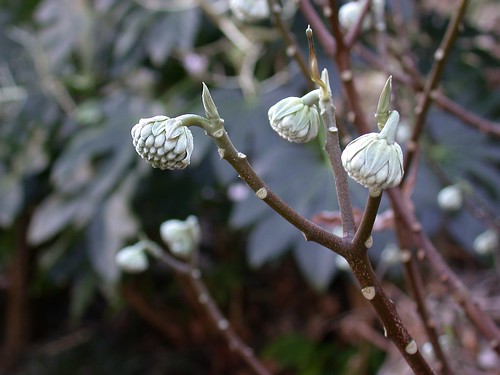
Flower buds of Edgeworthia chrysantha in December, promising fragrance in spring
Edgeworthia chrysantha, sometimes known as "paperbush", is a Chinese species in the same plant family (Thymelaeaceae) as the far better-known Daphne. I wanted to grow this species because I like fragrant flowers, and it was supposed to bloom in the winter. I also liked the large, almost tropical-looking foliage. When I spotted the species a few year ago at a Friends of the National Arboretum (FONA) spring plant sale I purchased one and planted it in my garden.
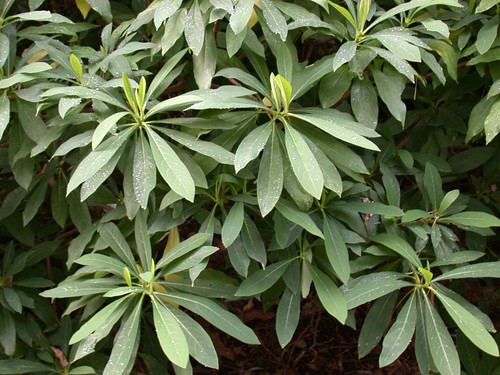
Foliage of Edgeworthia chrysantha. Norfolk Botanical Garden, Norfolk, Virginia
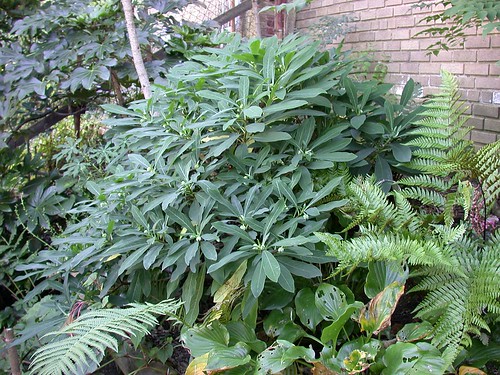
Edgeworthia chrysantha in my own garden
The plant has an odd branching habit, which is most noticeable after the leaves are killed by frost (they have no fall color, unfortunately). The nodding clusters of buds are covered with silvery hairs and provide some winter interest, but not much. One oddity of this species is that it blooms on bare stems in late winter or early spring before leafing out. In my own garden, it blooms for several weeks beginning in late February or early March. The intensely fragrant flowers open deep yellow, turning white as they age. The flowers do not produce petals; what appear to be petals are actually fused sepals. Some selections have orange flowers.
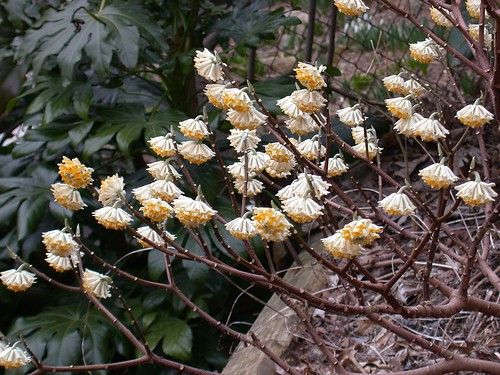
Edgeworthia chrysantha flowering in March

Flowers of Edgeworthia chrysantha, showing the 4-lobed calyx
Edgeworthia is a small genus of only 5 species, 4 of them occurring in China. The genus name honors Irish botanist Michael Edgeworth and "chrysantha" means "golden flowered". The species was described by John Lindley in 1846, based on a collection by Robert Fortune in Chusan (Zhoushan), China. The plant eventually grows into a large, spreading shrub. It is undemanding and easy to grow, doing well in part sun or bright dappled shade. The large leaves contrast well with smaller, finer foliage. Alternatively, it can be used as a softening counterpoint to masonry or stone.

Edgeworthia chrysantha in the Enid A. Haupt Garden, Smithsonian Institution, Washington, DC
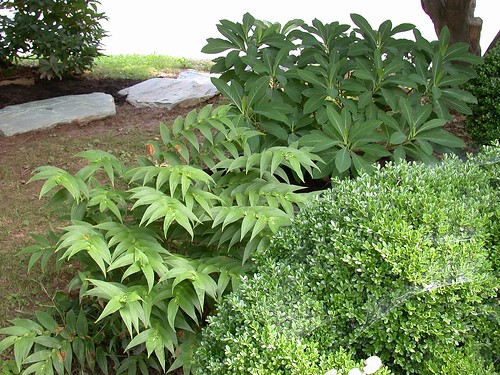
Edgeworthia chrysantha (upper right) with Tricyrtis and Buxus. Private garden, Kensington, Maryland
As it turns out, this is a moderately variable species with respect to both growth habit and leaf size. The plant I picked out is one of the smaller-leafed selections, not producing the large leaves I liked so much. As for placement, I may have miscalculated a bit as this species can grow rather large. But the fragrant flowers it produces when nothing else is blooming make up for any drawbacks!
Further reading:
Just one plant: Edgeworthia chrysantha
A shrub for all seasons: Edgeworthia
Edgeworthia chrysantha (oriental paperbush)

The clone with the large tropical-like leaves is most likely a tetraploid - larger stems and larger flowers to boot. Only cytology can confirm. A friend had a large-leaf form in her former garden in Wilmington, DE, and it was very impressive with epimediums and hostas.
ReplyDelete